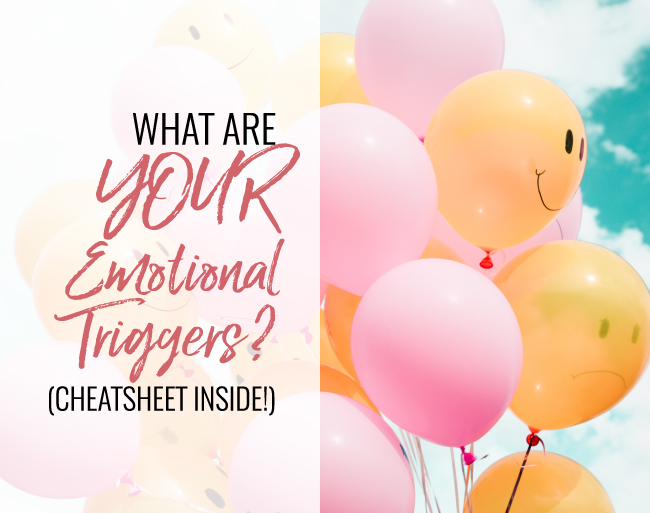Have you ever had a response to something that seems out of proportion or out of sync with what actually happened?
Here’s an example: I had a client years ago who suffered through a bad breakup with her fiancé. Not long after that crushing experience, she came into my office one day telling me that she thought she was a really horrible person because when she found out her friend got engaged, instead of being happy for her (like she felt she should be), she not only was pissed, she also was finding herself thinking bad things about her friend.
Now, this was really out of character for my client (because, hello? She’s not a terrible person), but let me ask you…what do you think was going on for her? If you’re thinking…she got triggered…you’d be right. That happy couple was an emotional trigger for her for good reason.
The thing is, sometimes we don’t always understand why we respond to things or situations the way we do…especially when we’re IN it. Sometimes it’s not easy to connect the dots between what’s happening and our emotional reactions.
This episode is all about how you can identify and understand your own emotional triggers, and then I’m giving you four steps you can take to get out of that stuck place where you feel triggered so that you can respond instead of react.
So what are emotional triggers? They are the deep places within each of us where our needs, fears, desires and past experiences are reactive. When a trigger is activated by a topic or situation, it is usually because there’s a fear or anxiety that your needs are not or will not be met or that a boundary has or will be crossed.
Why do we care? Our emotional triggers can help us locate aspects of our life that we’re frustrated with and, more importantly, point us to the places where we need to heal.
Let me be clear: there’s nothing wrong or bad about having triggers (in this week’s episode, I share MY triggers, so be sure to watch or listen in). Identifying and working through your own emotional triggers gives you the power to set yourself free to choose how you show up in the world.
Let’s get into the steps you can take to get clear on what might be triggering you:
1. Raise Your Awareness About Your Emotional Triggers
We are going to take an inventory of the things, topics, behaviors, and situations that have activated you in the past. What are those things that create a real emotional response that makes you feel bad, out of line or is out of proportion to what’s going on in the moment? In this week’s cheat sheet (download it here now), I’ve given you some questions to help you start connecting the dots between these kinds of experiences and what your underlying need, fear or boundary might be.
2. Cultivate Present Moment Awareness
You must be present enough in your life to recognize the trigger in the moment so that you can CHOOSE to respond instead of knee-jerk react. Tune into your body. Often the first signal of an emotional trigger is physical. You might feel a constriction in your chest or another part of your body, your face might feel hot, or your breathing might accelerate. Pay attention and reflect on the kind of physical experiences you have when you feel like a need isn’t being met or a boundary has been crossed.
3. Take a Pause
When you feel that constriction or physical warning sign, try to stop, locate where the sensation is in your body and then take a few deep breaths into that space (I recommend about five breaths). This will not only help you create a longer response time, but it also will help to expand your capacity for mindfulness in the present moment so that you can take the next step.
4. Use an Affirmation to Self-Soothe
I invite you to choose a simple phrase that you can use that will empower and soothe you in any moment of emotional triggering. It could be as simple as repeating to yourself, “I am safe. Everything is OK.” Or in the case of my client and her response to her friend’s engagement, we came up with “My time will come and it will be right.” You can create more than one that works for you depending on what is being triggered. It should be a phrase that’s easy for you to remember, even in emotional turmoil, and it should create a more hopeful and empowered state or a sense of calm as you repeat it to yourself. In the cheat sheet, I have an amazing resource for you from Outsmart Your Brain with a list of the most common needs and triggers that can help you with this and you can grab that here now.
I invite you to try these steps to raise your awareness around emotional triggers in your own life to see if it doesn’t help you find some balance, some clarity, and some more space to choose the way you want to feel every single day.
I hope that you enjoyed this episode of The Terri Cole show and that it added value to your life. If it did, please share it on your social media platforms so that together we can empower as many people in the world as we possibly can. I hope you have an amazing, beautiful week and as always, take care of you.
Terri Cole is a licensed psychotherapist, transformation coach, and an expert at turning fear into freedom. Sign up for Terri’s weekly Newsletter, check out her blog and follow her on Twitter.












